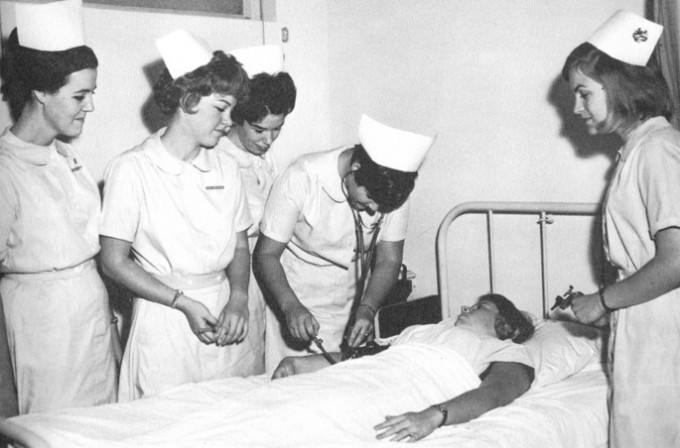Profiles In Nursing
Marian Alford (1905-1989), Nurse Organizer
Taking action to improve conditions for nurses

Hard work, low pay. In 1966, nurses earned an average of $5,200 year (about $38,000 today). Low wages and poor working conditions led to a controversial strike of nurses in California that year. Pictured above, student nurses at Mount St. Mary’s College, Los Angeles, 1966.
When we think of labor strife in the United States, we usually think of coal miners, farm or auto workers and maybe air-traffic controllers. In California, however, nursing has often been at the center of some contentious labor disputes. With several major work actions in our state in recent years, it seems like a good time to revisit some of the leading nurse organizers of the past, like Marian Alford.
From Administrator to Activist
Born to a pioneer family in Humboldt County in 1904, Alford earned her nursing degree from the University of California in 1926, followed in 1946 by a master’s from Columbia. Her original interest was obstetrics, but she soon moved into hospital administration, holding positions at Stanford and later Peralta Hospital in Oakland.
Alford took an early interest in local nursing organizations. She was a member of the California State Nurses Association (CSNA) and once remarked that at one time or another, she’d served “on nearly every district or state committee.”
Her priorities were patient care and nurses’ welfare. She felt (as recent studies have confirmed) that the two are not in conflict and in fact are inextricably linked: Better conditions for nurses result in better outcomes for patients. The hard part, of course, is that trying to reach a balance is often a battle.
Collective Bargaining
It was due in large part to the leadership of Alford and then Executive Director Shirley Titus that the CSNA first sought to improve working conditions for nurses through collective bargaining back in 1942.


